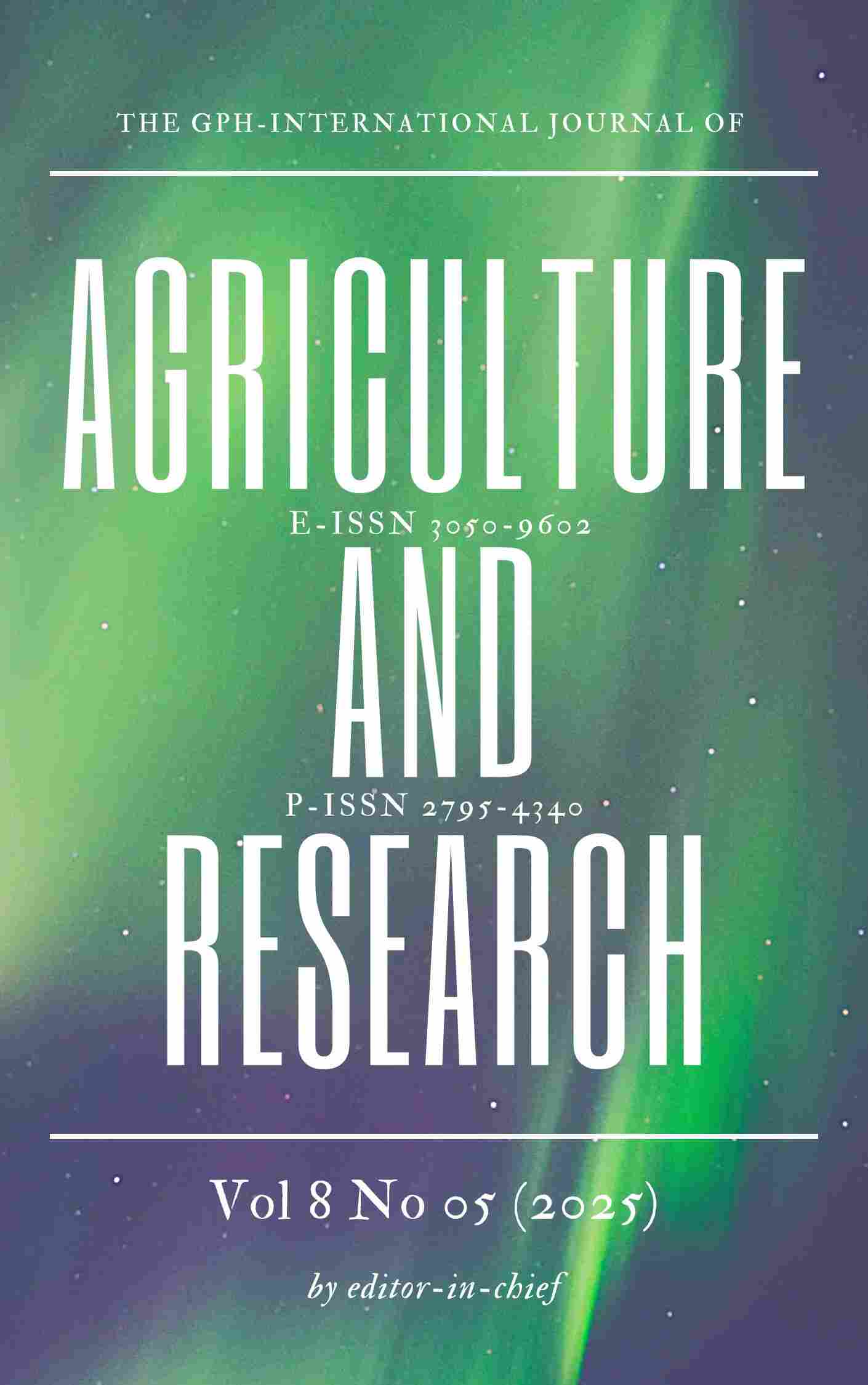ECONOMIC ANALYSIS OF CASSAVA PRODUCTION IN OTUKPO LOCAL GOVERNMENT AREA OF BENUE STATE, NIGERIA
Abstract
Cassava is a vital staple crop and a major source of income for rural farmers in Nigeria. This study Analyzes the Economics of Cassava Production in Otukpo Local Government Area of Benue State, Nigeria. The research aimed to describe the socioeconomic characteristics of cassava farmers, estimated the profitability of cassava production, determined the factors influencing production, and identified constraints faced by farmers in the study area.A structured questionnaire was used to collect data from cassava farmers, and descriptive statistics, gross margin, and regression were employed for data analysis. The findings revealed that most cassava farmers in the study area are middle-aged with mean age of 40years, with all respondents having one form of formal education or the other, also (48.3%) had 3-5 household size of persons, and majority (63.3%) had 1-5years of farming experience,80.8% respondents cultivate 0.5 hectares of farm size, 56.3% are male and 67.5%married, 62.5% had contact with extension agents, 99.2% took farming as primary occupations, 60.0% hadaccess to loan, 57.5% got their source of land from family and used personal savings (85.%).The average revenue from cassava production was ₦294,889 leading to an averagegross margin (GM) of ₦198,310 when average variable cost was subtracted from average revenue. The Return per Naira Invested (RNI), calculated as GM/TC, was 2.1, indicating that for every naira invested in cassava production, farmers earned ₦2.10. The multiple regression analysis demonstrated exceptional explanatory power with an R-squared value of 0.9938 and an adjusted R-squared of 0.9931, indicating that the selected variables explain nearly all variation in cassava profitability. From the findings of this study, the following recommendations were drawn, high cost of farm inputs affects profitability, the government should help implement subsidy programs that make these inputs more affordable and accessible to farmers.
Downloads
References
Chima, C., & Rahman, A. (2017). Cassava production in Nigeria: Trends, constraints, and opportunities. Journal of Agricultural Science and Technology, 15(4), 23–30.
Flannery, K. V. (1973). The origins of agriculture. Annual Review of Anthropology, 2, 271–310.
National Bureau of Statistics (NBS). (2021). Annual Agricultural Survey: Cassava production estimates in Nigeria.
Omotayo, A. O., & Oladejo, A. J. (2016). Profitability of cassava-based production systems. Journal of Human Ecology, 56(1–2), 196–203.
Onyemma, J. O., Tokula, M., Tertsea, K. M., & Chimla, N. S. (2019). Impact of improved cassava technology adoption on farmers’ output in Benue State, Nigeria. Journal of Applied Life Sciences International, 21(4), 1–10.
Oyekola, I. A., Oye, A. J., Samuel, F., Oyeyipo, E. J., Arisukwu, O. C., Iwelumor, O. S., & Rasak, B. (2021). Social, economic and ecological factors influencing cassava farming in Nigerian rural context. International Journal of Social Sciences, 10(4), 295–303.
Tokula, M. H., Nwokocha, I. N., & Onwuka, S. (2020). Effect of socio-economic factors on cassava production in Benue State, Nigeria. Journal of Community & Communication Research, 5(1), 208–214.
Yuguda, M. I., Ojo, S. O., & Salisu, I. (2020). The impact of agricultural policies on cassava production in Nigeria. African Journal of Agricultural Research, 15(10), 1320–1332.
Food and Agriculture Organization of the United Nations (FAO). (2022). Global cassava production and trends. Rome: FAO.
Author(s) and co-author(s) jointly and severally represent and warrant that the Article is original with the author(s) and does not infringe any copyright or violate any other right of any third parties, and that the Article has not been published elsewhere. Author(s) agree to the terms that the GPH Journal will have the full right to remove the published article on any misconduct found in the published article.

























